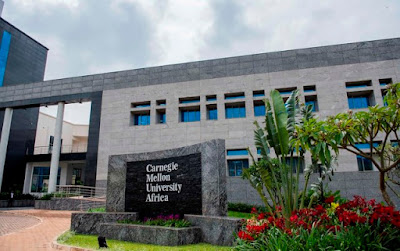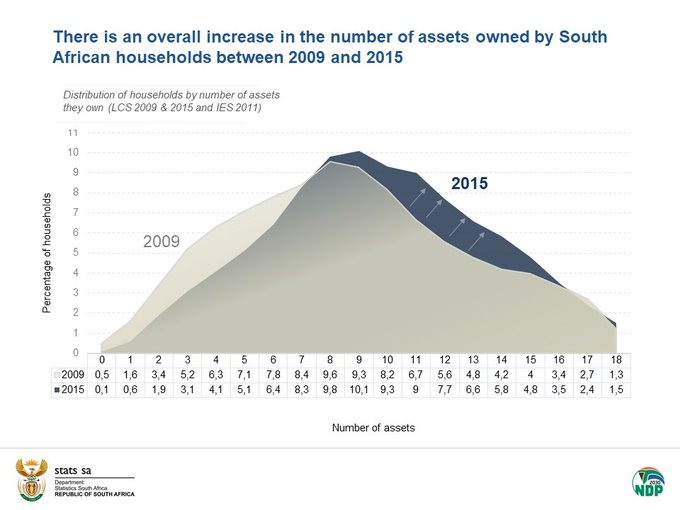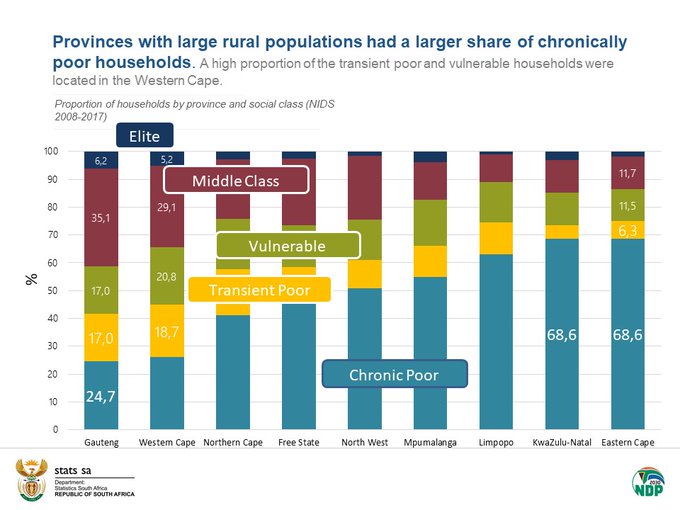 |
| Robert Mugabe and his wife in February 2016. © T. Mukwazhi/AP/SIPA |
By François Soudan
From the rise of "Gucci Grace" to the fall of
"Comrade Bob", to Emmerson Mnangagwa's incredible escape, the book ‘Secrets
of history’ recounts the riveting story of the presidential couple’s last weeks
in power.
Grace Mugabe is hardly ever seen leaving her private villa
in Mount Pleasant, in the upscale suburb of Harare, where she has taken refuge
with her daughter, Bona, after deserting the cursed Blue Roof mansion. The last
time people saw her in public since the coup d’état of November 14, 2017 was
just under two months ago, at the family funeral of her husband, Robert Mugabe.
After refusing an official state funeral and burial at the
Capital’s Heroes’ Square for her husband, Grace led the funeral procession to Kutama
Cemetery, where the father of independence was born 95 years earlier. “If she
doesn’t come out anymore, it’s because she’s afraid of being stoned to death,”
believes one of Zimbabwe’s many critics of Grace.
“Wrong,” retorts
one of the few MPs who still dares to associate with her: “If she lives in a
recluse, it is because she can no longer bear to feel the
presence of those who betrayed her husband”.
Political life in Zimbabwe is similar to the plot of Game
of Thrones, with spectacular outbursts of public anger by actors who accuse
each other of the worst deeds.
In exchange for dropping legal proceedings against her –
which was demanded by many Zimbabweans – Grace Mugabe agreed to remain silent
and to withdraw from the world. The opaque elite who have governed this country
for four decades stand united. When you can’t kill yourself, you make
compromises.
Boeing shopping trip
 |
| Emmerson Mnangagwa and Robert Mugabe, November 1, 2017. Less than a week later, the vice president will be fired. © Xinhua/XINHUA-REA |
The secret story of Grace’s rise following Robert
Mugabe’s fall is told by Zimbabwean journalist and writer Douglas Rogers in a
detailed investigation published on the second anniversary of Operation Restore
Legacy (Two Weeks in November, London, Short Books). It begins one day in the
austral winter of 2014.
At an extraordinary meeting of the Zanu-PF Central
Committee, President Mugabe announces his decision to appoint the first lady to
head the female branch of the ruling party and her subsequent entry into the
political bureau. Among Zanu-PF loyalists, many of whom were former liberation
fighters, they’re aware of the influence that the former secretary has over the
leader who is forty-one years her senior.
They’re
also aware of her escapades. “Gucci Grace” has a taste for luxury, an
eruptive temperament and enjoys lavish shopping trips to
London and Singapore aboard the presidential Boeing. Everyone fears and,
silently, disapproves of her appointment.
The first lady acts like a
second president. She summons ministers, attends hearings with a notebook in
her hand, and appoints members of her own stable – the “Generation 40” (G40) –
to head local federations. The group’s composed of ambitious politicians who were
too young to have participated in the glorious “chimurenga” – the armed
struggle.
It’s led by the Minister of
Higher Education, Jonathan Moyo, an unscrupulous opportunist who, after being a
fierce opponent of the regime, has turned into a zealous courtesan of the
presidential couple. As head of the universities, he also ensured that Grace
obtained a doctorate in sociology in record time: just three months.
Grace’s
first target is a woman, who poses a major threat to her ambition of succeeding
her husband.
Joice Mujuru is a decorated
veteran, a minister since 1980, and Vice-President of the Republic for ten
years. She’s the widow of General Solomon Mujuru, who died in 2011 during a
suspicious fire on her farm. Her nickname during war was “Teurai Ropa” – the
one who spills blood. Joice enjoys undeniable legitimacy, to the point
that many Zimbabweans see her as the natural heir to “Comrade Bob”.
After her appointment to
political office, Grace launches a campaign against Joice Mujuru, calling her a
“conspirator” who’s determined to avenge her husband’s death, and seize power.
In December 2014, Mugabe gives in.
He
dismisses Mujuru and eight ministers deemed close to her. Her successor
as vice-president is another veteran: Emmerson Dambudzo
Mnangagwa. This will be Grace Mugabe’s second target.
Even more than Joice Mujuru,
Mnangagwa is a respected personality among veterans and the leading figure of
Zanu-PF’s so-called “Lacoste Group” – a reference to the crocodile-shaped logo
of the famous French sportswear brand – which brings together the “liberators”
of Zimbabwe. The guerrilla unit, he led, during the liberation struggle was
called the “Crocodile Gang”. He was arrested by the police, tortured, and
sentenced to ten years in prison for sabotage against Ian Smith’s government.
Behind bars, he met Robert Mugabe. Since then, they have never left each
other’s side.
North Korean advisors
For three decades, Mnangagwa
executed the wishes of his leader without hesitation. As Minister of Security
in 1983, he supervised the bloody “Gukurahundi” operation (“the rain that
sweeps away garbage”) in Matabeleland, resulting in the deaths of 20,000 people
in nine months.
In 1998, he was deployed in
the Democratic Republic of Congo, where he coordinated the Zimbabwean
contingent’s support for the Laurent-Désiré Kabila regime. It allows senior
officers to enrich themselves through the trafficking of copper and diamonds.
In both 2008 and 2013, as Minister of Defence, he played a key role in the
post-election violence and repression that decimated the ranks of the
opposition’s leader, Morgan Tsvangirai.
In December 2016, as Zimbabwe plunged
further into economic and social turmoil, Zanu-PF nominated
Comrade Bob, 92, as its 2018 presidential candidate. The plan devised by Grace
and her G40 was simple: her husband, once re-elected, will resign in her
favour. But first, she must be reappointed as vice-president.
In early 2017, as Grace
prepares to take the old leader on an exhausting tour of pre-election meetings,
she holds a secret meeting at the Blue Roof Manor. In his room upstairs, Robert
Mugabe is asleep. In the living room downstairs, the G40 leaders gather around
Grace as she explains why the Lacoste Group must be “neutralized” one by one,
starting with Mnangagwa.
The two factions hold the same
views, ideology, and vision.. Only the struggle for power matters. During
campaign meetings Robert Mugabe falls asleep frequently as Grace and Mnangagwa
challenge each other.
Arsenic poisoning?
In mid-August, a lunch is
organized in the town of Gwanda on the sidelines of one of these gatherings.
After consuming ice cream from Grace Mugabe’s dairy farm (seized about ten
years earlier from a white owner), the vice-president collapses. He was
evacuated to a hospital in Johannesburg, South Africa. Mnangagwa and his
entourage are convinced that Grace laced his food with arsenic. When asked
about this accusation a few days later during a talk show on ZBC, Grace
laughed, saying “Why would I want to kill Mnangagwa? Who is Mnangagwa on
this earth? Killing someone my husband made? It doesn’t make any sense!”.
In this hostile climate, the
election campaign continues. At the beginning of October, the First Lady
crosses the line: she attacks her rival directly, accusing him of fomenting a
coup d’état. Standing with a microphone in her hand, dressed like a rock star,
she screams: “Traitors and usurpers will be eliminated!”
Sitting
to the right of the old chief, with his eyes half closed, Emmerson Mnangagwa did
not react. He replies indirectly a month later, at a meeting in Bulawayo. As
Grace gets up from her chair to deliver a new diatribe, the crowd, mostly made
up of veterans, explodes in jeers while waving hundreds of toy crocodiles.
The message is very clear.
Robert Mugabe, drawn from his sleep by the screams, immediately asks for the
microphone. He lifts a boney finger and says, “You insult and denigrate
the first lady on behalf of Mnangagwa? All right. I’ll fire him”.On November 6,
Mnangagwa was dismissed and excluded from the party. His personal guard is
unarmed.
To escape imminent arrest, he
takes flight.
 |
| Emmerson Mnangagwa at Zanu-PF headquarters in Harare, Wednesday, November 22. Ben Curtis/AP/SIPA |
At dawn on November 7, he leaves Harare in a convoy of
three vehicles, heading southeast towards the Mozambican border. He puts on his
wife’s king-size sunglasses, and a wide-brimmed safari hat. His three sons and
a handful of bodyguards accompany him. When he arrives at the Mutare border
crossing, police officers recognize him and draw their weapons, forcing the
convoy to make a hasty U-turn. After a few kilometres, the three 4×4s take a
side road and stop in front of an abandoned earthen hut. Mnangagwa and his
eldest son, Junior get off and take shelter under the thatched roof, while the
vehicles return to Harare.
At
nightfall, they both walk along a smuggler’s trail that will take them to
Mozambique. But police equipped with powerful flashlights
and sniffer dogs are looking for them. Mnangagwa and Junior – who firmly holds
his father’s Louis Vuitton bag containing US$8,000 in small bills – are forced
to cross a swamp and crawl through the mud to escape them.
They meet a mystic with
amulets, who shows them the way and chases away evil spirits in exchange for a
few greenbacks. Next, they stumble upon a garbage collector armed with a rusty
AK47. They pay him $500 to leave them alone.
After 24 hours in the bush,
they finally arrive in the Mozambican city of Manica, with sore feet and
covered in mud. From there, they move to Maputo and Johannesburg, where a disparate
group of Zimbabwean opponents take care of them. It’s a strange cocktail of war
veterans, Zanu-PF elders, expropriated white farmers, and human rights
activists, who help them.
Gun in hand
In Harare, the news of
Mnangagwa’s escape is greeted with jubilation by Grace and the G40. “Finally
rid of the Crocodile!” says Mugabe. His wife’s official appointment as
vice-president is scheduled for 16 November. Euphoric, Grace makes preparations
for a grand ceremony but nothing will go as planned.
Mnangagwa’s escape raises
Robert Mugabe’s paranoia, who fears a coup d’état. The first on his list of
suspects is none other than the Chief of the Army Staff, General Constantino
Chiwenga, a relative of Mnangagwa with whom he served during Operation
Gukurahundi. Mugabe orders his arrest as soon as he steps on the tarmac at
Harare airport after returning from a working visit to China.
In the evening of November 12,
a squadron of police officers waits for Chiwenga as he gets off the plane. But,
the General is aware of the plan, and takes precautions. Members of the special
forces are disguised as airport maintenance staff. They surround the police
officers with their weapons drawn. The attempted arrest turns into a fiasco.
The
next day, Chiwenga and – from South Africa – Mnangagwa rally most of the senior
officers by telephone around Operation Restore Legacy, the
code name for what was nothing more than a coup d’état. On the afternoon of
November 14, the operation was launched, just as Robert Mugabe began to chair
the Council of Ministers. On the agenda: the inauguration of the First Lady,
scheduled for the next day.
 |
Zimbabweans celebrate Robert Mugabe’s resignation in Harare on Tuesday, November 21. Ben Curtis/AP/SIPA
|
It is 6pm when Robert and Grace Mugabe leave the palace.
Army tanks have surrounded the barracks of the Presidential Guard, whose leader
is secretly aligned to the coup plotters. The couple still have no idea
what is going on.
Their convoy heads to the Blue Roof mansion in the
Borrowdale suburb. In addition to the 5-ton armoured Mercedes Pullman
Guard, there are four other Mercedes filled with Central Intelligence
Organization (CIO) secret service agents, six police Land Rovers and two trucks
carrying 30 black hooded Presidential Guard personnel.
Standing in front of the Blue Roof entrance gate, three
tanks and about a hundred soldiers are waiting for them in combat position.
Police officers and CIO agents raise their arms and let themselves be disarmed,
while the Presidential Guard watch the scene without moving. It was then that
Robert and Grace Mugabe finally understood that a coup d’état had just
overthrown them. They are silent. It was only later that night, when the sick
old lion had gone to bed, that Grace burst into fury in her living room.
At the same time, the army is arresting the main leaders
of the G40.
All were handcuffed without resistance, with the
exception of the Minister of Finance, Ignatius Chombo, whose private guard
resisted. Three security guards were shot dead by the military. They’ll be the
only ones who die from Operation Restore Legacy. Jonathan Moyo has better luck.
He manages to escape,taking refuge in the Blue Roof mansion, from where he
negotiates his fate with the new authorities: exile in Nairobi in exchange for
immunity.
On the morning of 21 November, Zimbabwean deputies, who
were only yesterday zealous supporters of the “national hero”, vote to dismiss
him. That same afternoon, Robert Mugabe resigns for a $10 million signing
bonus, legal immunity, and a promise that the couple’s property would not be
seized.
The next day, Emmerson Mnangagwa returns to Harare. His
first gesture is to reward the three generals who ran the operation: Chiwenga
was appointed Vice-President, Perence Shiri becomes Minister of Lands, and
Sibusiso Moyo takes over as Minister of Foreign Affairs. In Zimbabwe,
everything moves but nothing changes.
Thanks for reading. Follow the page and Share it.



























